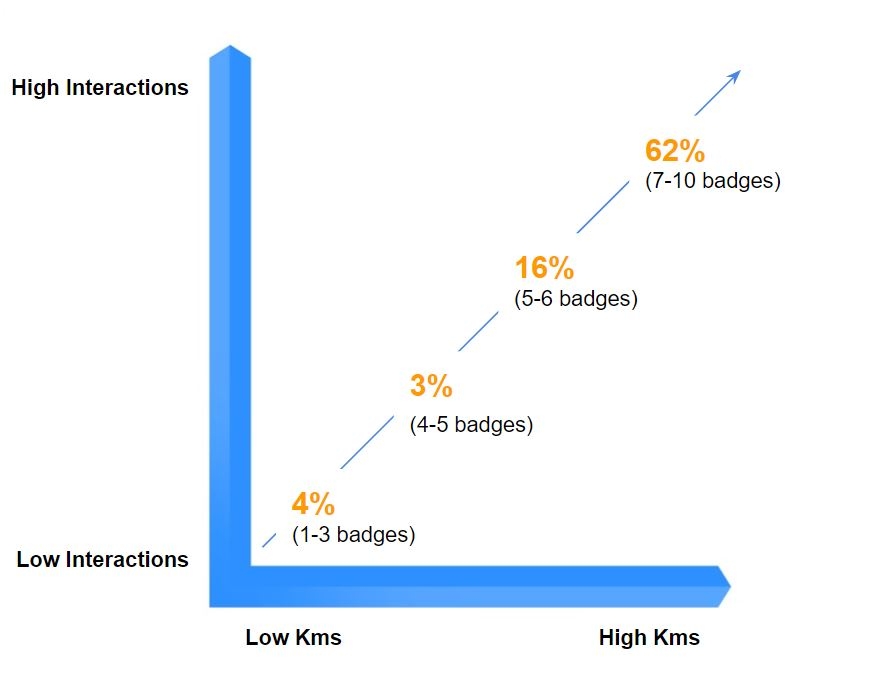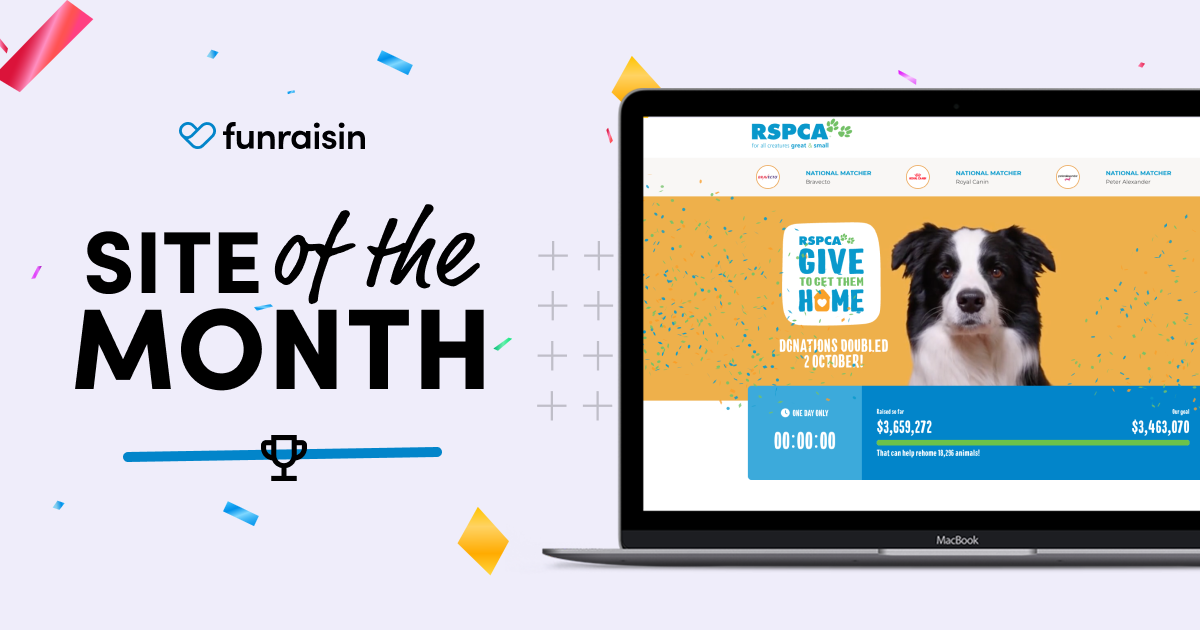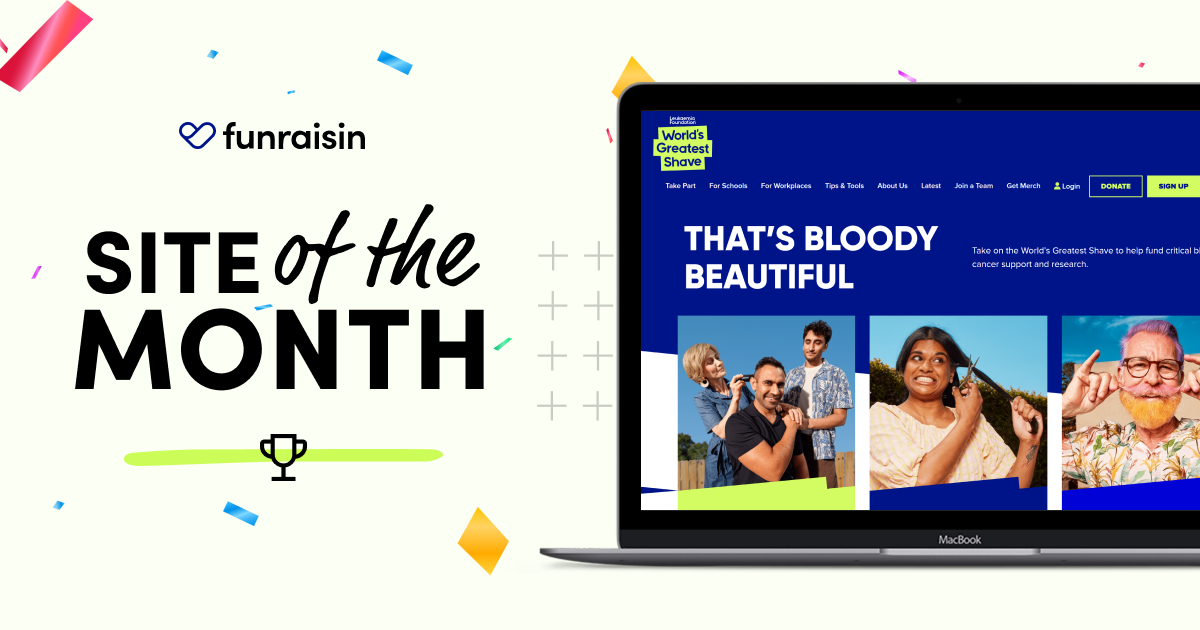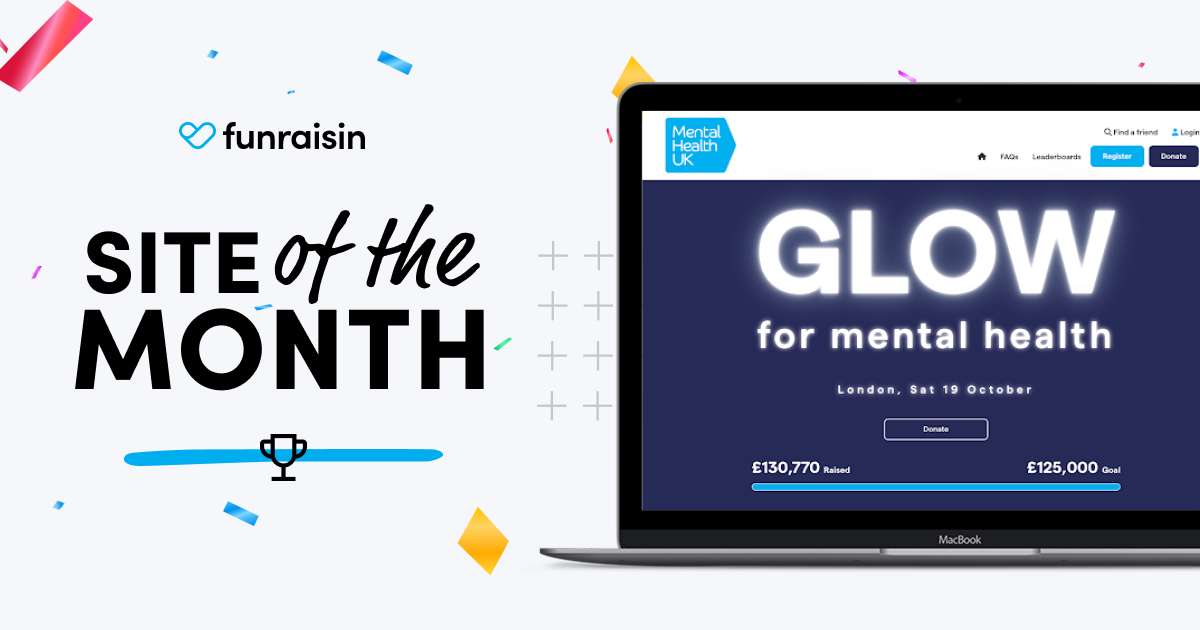I was on a panel recently hosted by Fundraising & Philanthropy where industry suppliers were asked to chat through learnings from an event they supported. Good timing then for us to look at some stats from The March Charge - a virtual challenge event where participants walk or run during the month of March and raise funds to beat cancer.
The March Charge has been a great event for us to support the last 2 years with Cancer Council's desire to trial innovative methods to maintain supporters active fundraising in the lead up, and during, the campaign period. The event has also seen 50% YoY growth for the last 2 years, so a great result and testament to the strategy by Donor Republic and the relentless testing and optimisation by the team at CCNSW.
Fitness Actvity + Interactions = $
The simple theory behind The March Charge is that people who exercise more, and interact more (are more engaged), should raise more.
Our role is to capture various types of interactions to help the charity identify different fundraiser types in order to communicate in a relevant way to each, that maximises their fundraising and enjoyment throughout the event period. In the case of The March Charge, and many physical and virtual events, we find there's a few participant types:
- Those who are committed to the cause
- Those who are more interested in the challenge
- A combination of both
This identification of a registrants propensity to fundraise is done through a combination of tracking their onsite interactions, their progression with the challenge (in this case fitness activity), and also offsite comms (yep we do this through the inbuilt branded URL generator). Indicators such as:
- Has changed fundraising target
- Has uploaded their own photo
- Whether they personalised their story
- Number of donations received
- Connecting up a fitness device (we integrate with Fitbit, Strava or Mapmyfitness)
- Gamification badges earnt
- The number of shares the entrant made of their page
- Whether they self donated
And many more indicators.
So what we we're looking for on The March Charge was the effect that fitness activity and challenges (through methods such as gamification) had on fundraising.

Segment fundraisers based on their campaign interactions
In addition to those onsite interactions we capture, we overlay that data with the number of gamification badges achieved. You’re then able to sync to this data to various CRM and marketing automation tools so you can take fundraisers through relevant journeys specific to their propensity to fundraise, along with how they were performing in the challenge.

This real time access to data we provide means relevant comms can be delivered to different segments. Whether that be to recognise milestones, reward efforts to date or migrate, or switch, fundraisers to different segments based on their ongoing achievement.
Instantly recognising the participants fundraising and fitness milestones is handled a little differently, typically through the inbuilt SMS and Email Triggers. This is because of the time sensitive nature of the comms, you want them sent as soon as the entrant reaches a miestone - not when the next sync kicks in. And this sync will be dependent on the volume of records you're sending through and the marketing automation platform you're connecting up to your Funraisin site.
Mailchimp for example will throttle the number of records quite quickly at around 1k, Campaign Monitor and Autopilot a little more. Factor in too the number of custom fields you're sending, and then multiply that by new and updated records and this throttling can happen faster than you think. This all adds up and if you're running and event with 200,000 entrants then you may have to wait up to 4-6 hours before knowing all your data has gone across and you're recognition emails have been sent. Way too long.
These recognition milestone SMS and emails can be personalised in Funraisin to members, teams and donors. As part of The March Charge, a combination of these were used at various points, such as when:
- The fundraiser received an encouraging SMS for their first fitness activity logged
- Another one for reaching 50% of their fundraising goal, then triggered emails for reaching 85% of their fundraising goal and again when 100% is reached
- When 50% of their distance target is met and again when 100% of their distance target was reached (distance targets in the platform can number of steps, kilometres/miles, even duration of movement)
... and many more.

Increase the sense of urgency with campaign sprints
Everyone loves a good leaderboard. With The March Charge specific ‘sprints’ (or challenges) were setup to increase the sense of urgency during the event and displayed in leaderboard formats. An example of this is a 48 hour challenge to raise $48. The leaderboard itself in this case was displaying those people who have raised funds from the start of the 48 hour sprint through to the end of it using custom leaderboared queries which can be easily added in.
On average people who participated in a sprint raised 70% more than those that didn’t.
But not all leaderboards were based around fitness and fundraising. Leaderboards were even personalised to show how people were feeling. To do this, emails were sent out asking people how they were feeling mid way through the month of March. Based on the link you clicked on, you were taken to a custom leaderboard where you saw yourself, and others with the same response (or in this case, the same feeling).
Here’s someone who was feeling the charge, having a great time, shown next to other fundraisers who responded with the same feeling.

Maintain active fundraising using gamification
Gamification badges are also built into the platform. These were switched on to reward participants for their fundraising and fitness activity. In The March Charge's case, 10 badges were used and these were recorded against each fundraiser and synced to Campaign Monitor to send out comms that encouraged medium-to-high propensity fundraisers to maintain their momentum. The recording of badges achieved also really helps to determine the level of interactions a fundraiser has with the event. Badges included:
- Return participant
- Setup a fundraising page (completed registration)
- Changed profile pic
- Shared page
- Increased fundraising target above $500
- Recruited a friend
- Self donated
- Reached $ target
- Reached km goal
- Achieved more than 5 donations
And some very interesting stats fell out!
People who achieved 8 badges raised on average 88% more than those who achieved 7.
3% of total entrants achieved 9 badges and accounted for 20% of total sponsored donations.
Here's the breakdown of fundraising by gamification badges achieved.

- Participants who achieved 7-10 badges raised 62% of sponsored donations
- Participants who achieved 5-6 badges raised 16% of sponsored donations
- Participants who achieved 3-4 badges raised 3% of sponsored donations
- Participants who achieved 1-3 badges raised 4% of sponsored donations
So our ultimate goal is to provide an amazing experience to the fundraiser.
We do this by leveling up the tools charities use to provide that better experience. The more ways we can provide the charity to better understand their fundraisers, to better be able to segment and target them, and to communicate in relevant ways to fundraisers, the greater the likelihood of delivering their impact will be.
On The March Charge, and in fact on all events, we can see that he higher engagement a fundraiser has with the event, the more rewarding their experience is and the better they fundraise.








